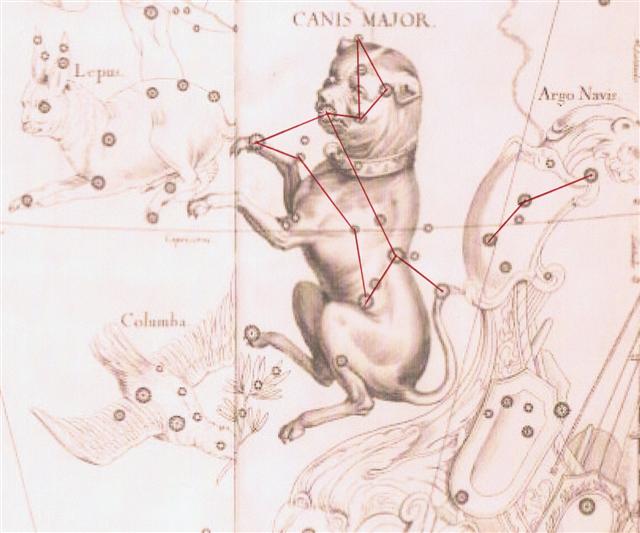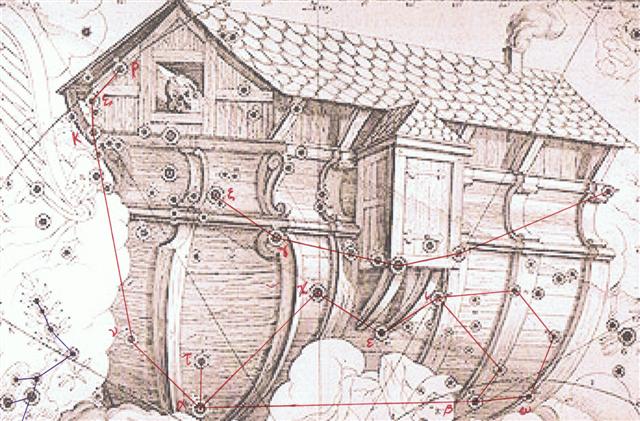Then follows a kind of overview, complicating matters: Furud at the little Rei is ζ Canis Majoris, at the back right paw of the Great Dog - which was touching Columba (the dove of Noah) who carried a fresh twig in her mouth as a sign of 'land' renewed:
... When the new moon appeared women assembled and bewailed those who had died since the last one, uttering the following lament: 'Alas! O moon! Thou has returned to life, but our departed beloved ones have not. Thou has bathed in the waiora a Tane, and had thy life renewed, but there is no fount to restore life to our departed ones. Alas ... Earth and Moon were sisters and therefore similar, both returning renewed after a temporary death 'under the water'. Far down in the south (toga) was the sunken ship (Argo Navis) with Naos (ζ Puppis) at the gable of Noah's house/boat. Through a square hole Noah evidently watched Naos (Noah 'in reverse') with interest:
... The Ship appears to have no bow ... Aratos wrote: Sternforward Argō by the Great Dog's tail // Is drawn; for hers is not a usual course, // But backward turned she comes, as vessels do // When sailors have transposed the crooked stern // On entering harbour; all the ship reverse, // And gliding backward on the beach it grounds. // Sternforward thus is Jason's Argō drawn ... Canopus is α at the very bottom of the stern of this sunken ship and Canopus was rising the day after Furud, together with the Sun in St John's Eve and half a year after Christmas Eve.
... Balancing the notion of tapu, though not in perfect dichotomy, is the notion of noa. This pertains to mundane, ordinary objects and functions - household and serving utensils, the acts of preparing and eating food, the many small and common interactions of everyday life. Noa is safe - without preternatural sanction or restricted association, it is demonstrated by the lifting of the condition of tapu from a particular environment or object. A newly built house, ornamented and fresh, would be considered tapu - unsafe, prohibited, raw with spirit and inaccessible to the common touch of people. Making the place noa - 'blessing' it in current terms - would involve ritual, and the crossing of the threshold, usually by a high-born woman. Her special form of tapu would counter the energies within the house, and thus render it noa, and safe for general entry. Such ritual continues to be observed today; even in the context of an ethnological or fine arts exhibition, these procedures are followed, to appease the ancestral forces who may generate tapu, which imbues the objects with dread or beauty. | ||||||||||||||||||||||||||||||||||||||||||||||||||||||||||||||||||||||||||||||||||||||||||||||||





